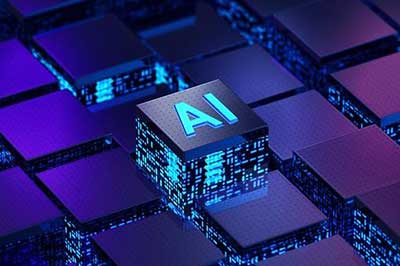Date: 23/12/2022
Relevance: GS-3: Science and Technology- developments and their applications and effects in everyday life; Awareness in the fields of IT, Computers, robotics
Key phrases: Artificial Intelligence, cognitive capabilities, one-size-fits-all, online tutoring platforms, data analytics, Chatbots, speech recognition technology, virtual reality (VR), Microsoft HoloLens, National Mission on AI, adaptive learning software.
Context:
- Artificial Intelligence(AI) has been enhancing human cognitive capabilities in ways never witnessed in the past. The recent advancements in AI promise to augment the students’ learning experience.
- The spell check feature of any AI based interface is the simplest example of how it enhances students’ learning experience by making the platform very interactive.
How can AI enhance learning experience?
- Firstly, AI can be used to learn analytics.
- AI can process and analyse large amounts of data to identify patterns and trends in student learning.
- This information can then be used to provide instruction and support to individual students or groups of students.
- Secondly, online tutoring platforms make use of AI algorithms to provide personalized recommendations and feedback to students based on their strengths and weaknesses.
- Thirdly, AI can be used to scan documents for plagiarism.
- Fourthly, speech recognition technology can be used in education in a number of ways, such as helping students with dyslexia or other reading disabilities convert text to speech.
- Fifthly, virtual reality (VR) use to enhance students’ learning
experience.
- VR is being used in some schools as a way to provide immersive experiences that can aid in student learning.
- For example, VR can be used to take students on a virtual field trip.
- Students can visit incredible places without leaving the classroom.
- Microsoft HoloLens can be used by medical students and doctors to learn about the human body using mixed reality.
- A student can even enlarge and walk inside the components of the human body. This can also help in treating different medical conditions by understanding them better.
What is the status of India in usage of AI for students’ learning experience?
- In India, AI is being used in education in multiple ways.
- Firstly, it is through the use of chatbots. Students can get the help immediately and they don’t have to wait for a tutor to be available.
- Secondly, it is through the use of adaptive learning software. This type of software adjusts the difficulty of the material based on the student’s individual needs.
- Creation of personalized courses.
- AI can also create personalized learning experiences for students.
- By using data from past performance, educators can create customised lesson plans and activities that target each student’s specific strengths and weaknesses.
- Such customization allows for a more targeted and effective learning experience for each student.
Do you know about AI potential in India?
- A recent NASSCOM report shows that India has a huge opportunity to position itself as a global hub for data and AI, adding 0.5 trillion dollars to the GDP by 2025.
- Nearly 45 percent of that value is likely to be delivered by three sectors—consumer goods & retail, agriculture and banking and insurance.
Do you know about the Government Steps towards AI?
- National Artificial Intelligence Mission, a five-year programme announced in Union Budget (2019-20)
- ‘National AI Portal', a joint initiative by MeitY, National e-Governance Division (NeGD) and NASSCOM.
- ‘INDIAai’ by MeitY to make India a dominant player in the global AI domain.
What are the potential drawbacks in usage of AI for students' learning experience?
- AI could lead to more “one-size-fits-all” instruction.
- AI might be used to simply automate existing instructional methods, rather than innovate new ones.
- AI-based instruction could exacerbate inequalities if, for example, only wealthy schools can afford to implement it.
- There is also the risk that excessive reliance on AI could lead to a loss of critical thinking skills among students.
What are the solutions suggested?
- The best way to address these drawbacks is to measure the learning outcomes after implementing AI solutions on a pilot basis.
- Studies have shown that learning outcomes can be improved with remedial
instructions given timely to AI.
- For example, the winner of the Nobel Prize in Economics, Abhijit Banerjee, and others did experimental evaluation of a programme run by PRATHAM in public schools in Mumbai and Vadodara.
- The programme provided an informal teacher (Balasakhi) for teaching. For about two hours remedial instruction was given out of the regular classroom.
- The programme improved student test scores. Something similar can be done for testing AI systems.
Conclusion:
- Considering India’s large population and the vast number of schools and colleges, the potential for AI to transform education in the country is huge.
- AI-based educational apps are also becoming popular among students as they offer a more interactive and engaging learning experience.
- With the growing popularity of AI in education, it is likely that we will see even more innovative applications of this technology in the future.
Source: The Hindu BL
Mains Question
Q. With increasing population and the vast number of schools and colleges, the potential for Artificial intelligence(AI) to transform the Indian education system is huge. Examine. (15 marks)






















